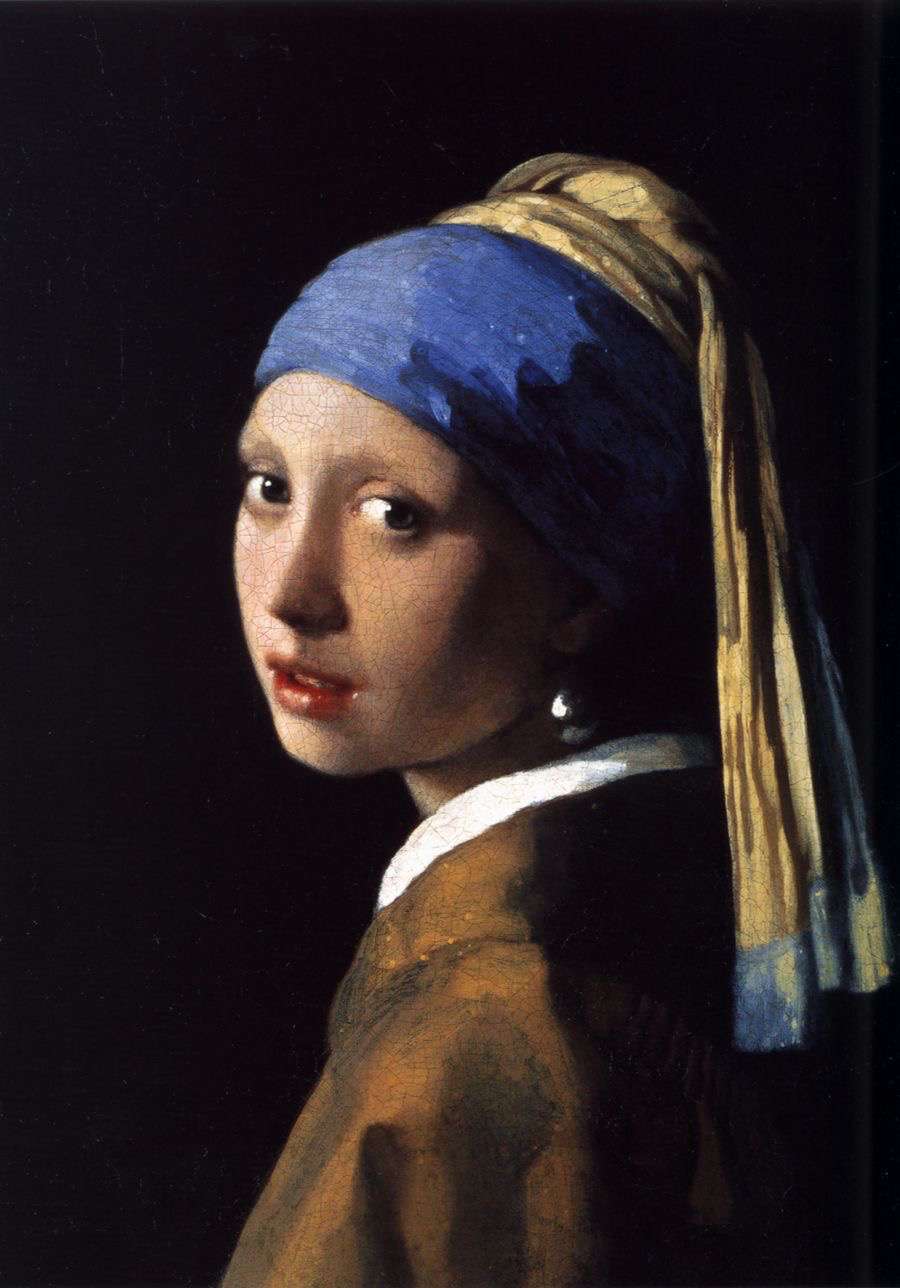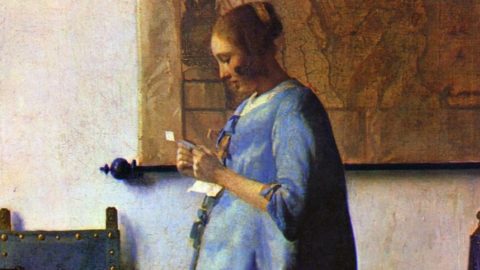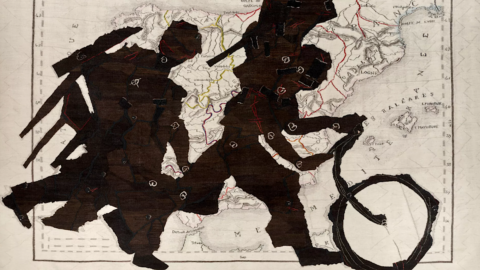In this regard, who does not remember the "girl reading a letter a painting preserved in the Rijksmuseum in Amsterdam, the painting is a very calibrated compositional harmony and that geometric relationship that regulates the arrangement of all the elements, which make the work perfect. A young woman presumably pregnant with her is dressed in light blue holding a perfectly folded sheet in her hands, with a deep gaze that brings her image to a harmonious immobility of the entire work.
It is 1660 when the artist comes closest to what happens outside the home; in his accuracy he makes the description of the streets of his city something plastic, to the point that "The narrow street“ is an absolute masterpiece. The house depicted is of late Gothic style and may have been inhabited by Vermeer himself, at least until 1661 when the house was destroyed to make way for the guild of St. Luke – the painters' guild of Delft.
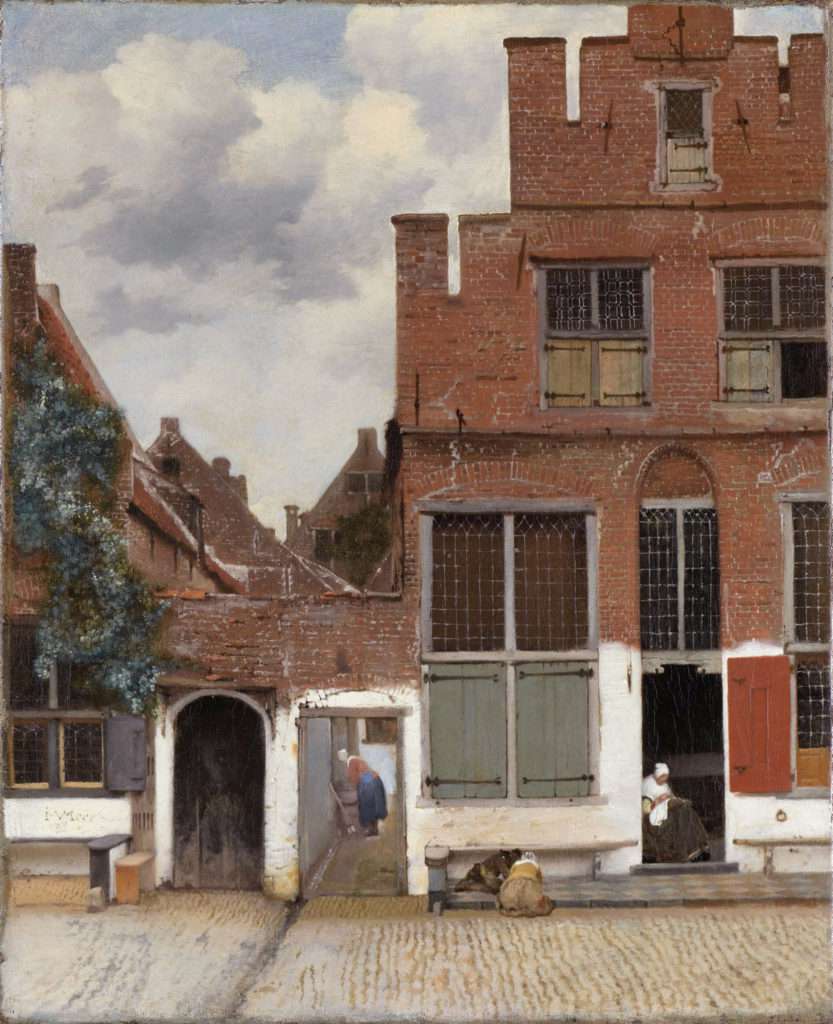
*oil on canvas
*54.3 x 44cm
*signed bl: I. VMeer
It is a multi-storey house in red brick, with a whole series of windows which make us imagine they may be the same ones found in the paintings that reproduce the interior environments. In front of the door a woman is intent on sewing, a second cleaning the entrance and at the back a third china intent on washing the floor: women who cherish their love for family life. The perspective of the roofs that make you imagine the village, silent and covered by a sky that promises rain, but which does not inspire any fear for the domestic hearth, is very beautiful.
However, we must reflect on the relationship between Vermeer and the landscape painting of that period; as once again Johannes tells us that he is not interested in the landscape as an exclusively urban view, but he loves the context where people's lives take place. Unfailingly interested in the soul, in sentiment, he prefers to insert small human figures in these landscape contexts.
It may seem like a marginal detail, but it's not like that, his is a precise choice and by carefully observing this meticulousness, the entire landscape portrayed becomes even more alive, full of feeling and capable of preserving any emotion.
Also in the View of Delft exhibited in the Mauritshuis in The Hague, which dates back to 1660-1661, we find a lively and lyrical interpretation of a city that lives its daily life. While on the shore there is the presence of five women and only two men, the atmosphere brings us into a moment of celebration, almost seeming the celebration of an expectation.
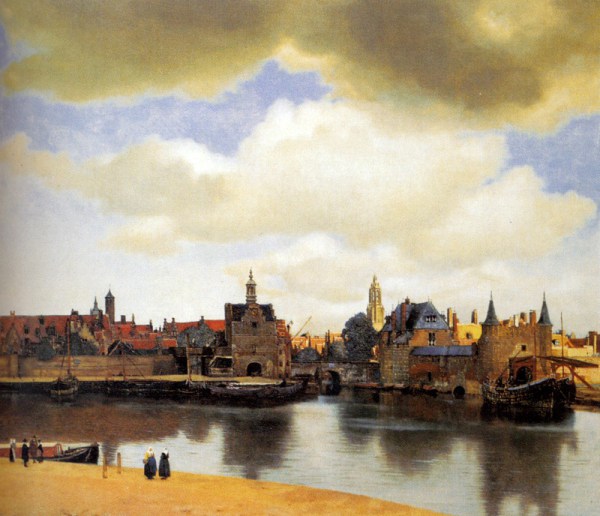
A magical painting for the colors and for that sense of immateriality that it expresses. In fact, one of Vermeer's most innovative aspects concerns precisely the figures. Instead, her more contemporary paintings prefer the almost didactic insertion of the characters in the landscape, Johanne presents them as simple and human presences, never expressions of the commercial activities or of the customs of the city.
But what involves us most is his love and respect for the female universe. In almost all of his paintings there are women to whom he reserves a place of honor for their affections, their emotions, their secrets. Whether they are placed in contexts inside the house or outside; these are always paintings where silence reigns, barely broken by a creak of a pen on paper, by an attempted chord on the harpsichord; or more often from a sigh just escaped, a smile, an expression just captured that expresses all the thought kept in the look.
Then, the joys withheld, the modesty, the recollection, the passions, the disturbances; always with great grace and almost on tiptoe, Johannes Vermeer accompanies us on the threshold of the female universe. Vermeer's women are all nameless and without history, but to each of them (Vermeer) he gives a flash of affection, almost an act of love: women as precious as "pearls".
